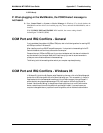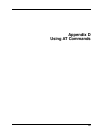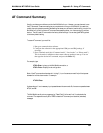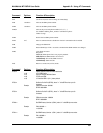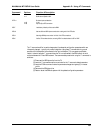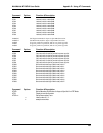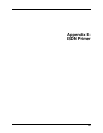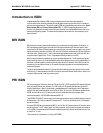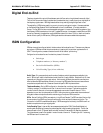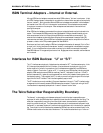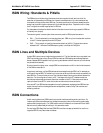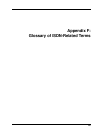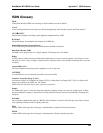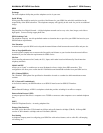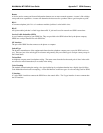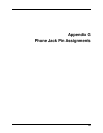
MultiMobile MT128ZLX User Guide Appendix E: ISDN Primer
242
Digital End-to-End
Telephony signals within central offices, between central offices, and on long-distance lines are all digital.
The link from the central office to the subscriber (the subscriber drop) is really the only non-digital part of
the telephony signal stream. ISDN digitizes subscriber drops, making the signal digital end-to-end.
The availability of ISDN varies greatly from country to country and region to region. It became available
on the East and West Coasts of the United States earlier than in the Midwest. It is widely available in
Europe. To offer ISDN, the telco must have special equipment in its central office switching systems. Also,
the distance of ISDN transmissions is limited. To access BRI service, it is necessary to subscribe to an ISDN
phone line. Generally, the subscriber must be 18000 feet (about 3.4 miles or 5.5 km) or less from the telco
central office to qualify for BRI service. (ISDN signal extension devices are available but expensive.)
ISDN Configuration
ISDN service must be configured at both the telco end and at the subscriber end. There are many features
and options of ISDN service that the telco must set up in keeping with its particular implementation of
ISDN. This configuration process at the telco’s central office is called “provisioning.”
Configuration at the subscriber end involves four pieces of information:
• Switch type
• Telephone numbers (or “directory numbers”)
• Service Profile Identifiers (SPIDs)
• Voice Encoding Type (A-law or Mu-law)
Switch Type. Only a comparatively small number of telephony switching systems are available in the
world. “Switch type” refers to the brand and model of switch in use by the telco. Outside of the U.S., there
is generally only one switch type in most nations. Unfortunately, different phone switch manufacturers
have implemented ISDN somewhat differently, thus requiring ISDN subscriber devices to have software
components compatible with all of these various switch-specific ISDN implementations.
Telephone Numbers. During ISDN configuration, the subscriber must know the phone numbers (or
“directory numbers”) that the service will use. It can work one of two ways. There can be one phone
number for both B-channels, or there can be a separate phone number for each B-channel. This is
dependent on your telco’s implementation of ISDN. Having two phone numbers adds the convenience of
being able to make voice phone calls while maintaining your computer ISDN connection.
SPIDs. Service Profile Ids (SPIDs) are used only in the U.S. and Canada. The SPID consists of the ten-digit
phone number of the ISDN line, plus a prefix and a suffix, which can identify features on the line. The
information in the SPID is used before call setup. If SPIDs are supplied incorrectly, the ISDN line will not
be able to complete incoming or outgoing calls.
Voice Encoding Type. A-law and Mu-law are separate standards for PCM (Pulse Code Modulation)
encoding and companding (the sampling scheme applied to digitize analog voice signals). The Mu-law
scheme is used in the U. S., Canada, Japan, and other locations influenced by U.S. telephony standards.
The A-law scheme is used in Europe and in most of the rest of the world. This setting is vital. If set wrong,
the ISDN service will not work at all.



